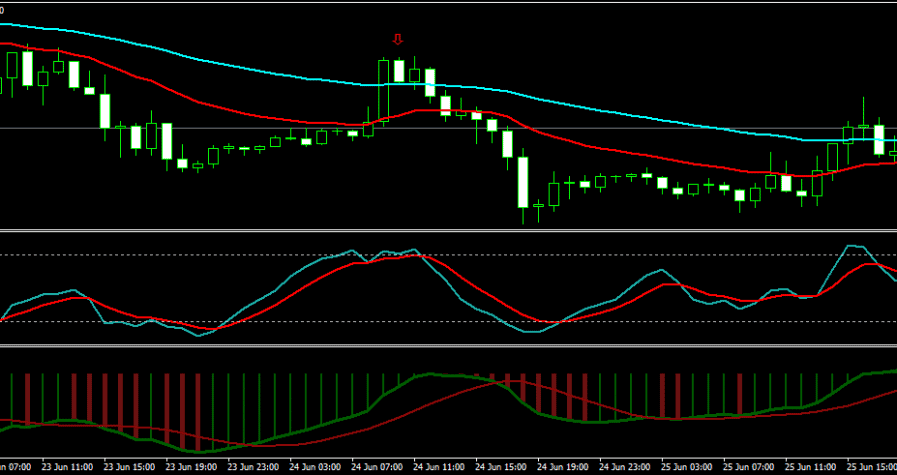Option Trading Strategies That Every Trader Should Know

Options trading strategies include the whole range from simple trades to extremely complex. No matter simple or complex, they’re based on two fundamental option types: calls and puts.
By Guy Avtalyon
There are unlimited ways to learn how to trade options and make money. How to find the best options trading strategy is also very important. You have to choose and find the right time to use your options trading strategy. That will result in huge profit potential for the traders. If you never learn you’ll be stuck in the question of how to trade options and miss a chance to make the best returns.
You may ask why trade options instead of direct assets?
Trading options have some advantages that could benefit you more than direct assets. Before we explain to you how to trade options, we want to tell you where you can do that.
In the US CBOE or the Chicago Board of Options Exchange is the largest exchange for trading options, actually, it is the largest in the world. Its offer is in the range from single stocks, ETFs to indexes.
In Europe, the situation is a bit more complex since we have a specific type of option. More about this READ HERE
Recently, the market maker demanded from regulators to bring the new rules about derivatives trades. But if you want to trade options CME Group or Intercontinental Exchange can be the right places.
Anyway, whichever you choose you’ll have to create the proper options strategy, one or more. You can choose from a very simple buy or sell strategy to extremely complex that require many simultaneous option positions.
How to trade options for income?
Traders frequently enter the trading options with limited or lack of understanding of options trading strategies. It is quite hard to explain why because they can learn how to trade options and find plenty of strategies that could limit the risk of trading and, at the same time, give the best returns.
That requires a little effort but gives an opportunity to take advantage. Traders who know how to trade options can enjoy the power of options trading. And they are very powerful. Having that in mind, we are giving you the shortened version of how to trade options along with the most powerful strategies you can use to generate the best returns. These strategies will teach you how to trade options and direct you on the right path.
Basic strategies to learn how to trade options
Options trading strategies appear in the range from simple, for example, one-legged strategies to fascinating multi-legged that seem like they are coming from the other planet but from one more advanced than ours. Simple or complex doesn’t matter. All of them are based on primary option types: calls and puts.
When we say “simple” that doesn’t mean there are no risks involved but that simple strategies are a good starting point to understand how to trade options. Also, they are able to give good returns.
So let’s start with what traders call one-legged strategies.
The long call
This is a strategy when you buy a call option. In other words, you go long. This strategy means that you are betting that the underlying stock price will go up, higher than the strike price by expiry date.
For example, the stock you want to trade is at $40 per share and the call is accessible for $2. The expiration date will come in 6 months. As you know, you have to buy 100 shares at least which is a standard option contract, so your contract is for that amount of shares. That will cost you $200.
$2 premium x 100 = $200
Here are three possible scenarios with your long call option.
The key variables in our imaginary case are:
The strike price is $45
Initial price in the example is $2
Current underlying price is $40
If the underlying price is lower than the strike price at expiration, your option will expire worthlessly. The result of your long call trade will be the loss. That loss is equal to the amount of money you paid for 100 shares, in our case study it is $200 which is the initial cost. The option’s total profit or loss depends on the underlying price. For example, if the underlying price is, let’s say, $42 why should you exercise the option? That would allow you to buy the underlying asset at, for example, at $45 which is more expensive than you buy it on the market.
But here is the good news. In the long call trade, the loss will be always limited, you cannot lose more than your initial cost was. Even in case the underlying price drop to zero. You’ll lose the $200, the amount you paid for the call option.
The second possible scenario is when the underlying price is equal to the strike price. That is a very rare case but still. In such a case there is no reason to exercise your option. You could simply buy it on the market since the price is the same. You’ll end up the same as in the first case scenario. Your loss will be equal to the initial cost.
But what if the underlying price is higher than the strike price?
Actually, you are buying the long call option for this scenario. That is the best possible case. When the underlying price is higher than the strike price that meant the option is in the money and you have to exercise it.
For example, the underlying price rose to $50. As you already know, the options give you the right to buy the underlying asset at the strike price, in our example, it is $45. What can you do? Immediately sell it at the underlying price, meaning you have to exercise the option. That will bring you a cash flow of $5 per share, and as you have 100 shares which means $500 for that option contract.
To calculate the profit from the trade you have to subtract the amount you initially paid.
($5 – $2) x 100 = $300
That is your profit from one long call trade.
The long put
It is similar to the long call, but in this options trade, you’re betting on a stock’s decline because you don’t want it to rise. You are buying a put option, wagering the stock will fall under the strike price by expiration.
For example, the stock trades at $40 per share, a long put option at $40 strike is available at a $4. The date expires in 6 months, for example.
This long put will cost you $400 for 100 shares and you bought 10 contracts.
$4 x 100 = $400
The long put value is the biggest when the stock is worth $0 per share. That leads us to conclude, and we’ll be right, the stock’s maximal price is the strike price multiplied by 100 shares and multiplied by the number of contracts.
In our example, it is $4.000.
$4 x 100 x 10 = $4.000
When the stock increases, you can sell the put and save part of the premium, if there’s some time to expiration. The greatest downside is a total loss of the premium or $400 in this example.
A long put is a way to bet on a stock’s drop if you can allow the possible loss of the whole premium. If the stock drops notably, you’ll earn significantly more if you own puts than you would by short-selling the stock. The other advantage is that you can use a long put to limit potential losses. In the case of short selling, you could take an incredible risk because the stock price could continue to rise. The stock has no expiration.
How to trade options – The short put
The short put is the inverse of the long put. The trader is selling a put, or in other words, going short. This strategy is best to use when you assume the stock will stay the same, meaning it will be flat or increase till the expiration. That will mean the put expires worthless and the put seller will take the whole premium. A short put is similar to a long call, but there are some differences. It is, so-to-say, a modest bet that the stock will rise so the payoff is modest too.
If you use this strategy in the best case you can expect the maximum return same as the premium but you’ll as the seller will receive that upfront. The premium will be paid as a whole if the stock price increases above the strike price or stays the same. If the stock goes below the strike price at expiration, the seller will have great losses because such will be forced to buy the stock at the strike price.
This strategy is useful for…
But this strategy is suitable for traders who want to generate income by selling the premium to other traders. Particularly to traders who are betting the stock will drop. Put sellers want to sell the premium, that’s all that matters.
Traders very often use short puts to reach a better buy price on a very expensive stock. They simply sell puts at a strike price, where they would like to buy the stock. For example, with the stock at $40, a trader will sell a put with a $30 strike price for $3.
If the stock drops below the strike price at expiration, the trader is assigned the stock and the premium will offset the buying price. The trader pays a $27 per share, or the $50 strike price lessen for the $3 premium that he/she already got.
But if the stock continues above the strike at expiration, the put seller will hold the cash. So such can decide to try the strategy again.
Is trading options a good idea?
Yes, of course, and cheaper than trading stocks. Well, it’s obvious why trading stocks is interesting. It’s somehow simple to understand and definitely there is money that traders can make. But some other financial instruments can produce the benefits that stocks do not.
Options trading, especially, has many advantages. Trading options is a very good idea and I’ll explain why even if it is more complex than stock trading and traders have to learn so much about it.
First of all, in trading options, traders can make meaningful profits without having a large sum of money. So, it is perfect for beginners that want to start trading with a little money. Also, it is very profitable for those with large budgets. This potential to make a big profit with a little money comes from the leverage. The leverage is what provides your capital with much more trading power.
A real-life example
For example, you have $500 to invest and you want to invest it in Company ABC stock. Its stock is currently trading at $10, but you expect it to rise. If you buy this stock using your $500, then you could buy 50 shares of that stock. If you were right and the stock really rose to, for example, $15 you will make a profit of $5 per share which is $250 for the total. That’s a 25% return on your initial investment.
Let’s see what will happen if you chose to buy call options on that stock.
Alternatively, you could choose to buy call options on the same stock, giving you the right to purchase the stock. If call options with a strike price of $10 were trading at $1.00 each, you could buy 500 options with your budget of $500. That will give you a chance to buy 500 shares if the stock rise. So, let’s say the stock rises to $15, and you might exercise your option and buy 500 shares. If you sell them quickly your profit will be $2,500.
Deduct your initial investment of $500 used to buy options. So, you’ll pocket $2.000. So the return of your capital invested is 200%.
This is a simple example but tells more about trading options than everything.
There are numerous profitable strategies for options trading. Traders-Paradise introduces you just four of the many strategies and ways how to trade options. Of course, we will continue writing about all strategies we know or find from other traders.
As we already said, there are countless ways to learn how to trade options and we are willing to present them.
Stay tuned, we are here for you.





